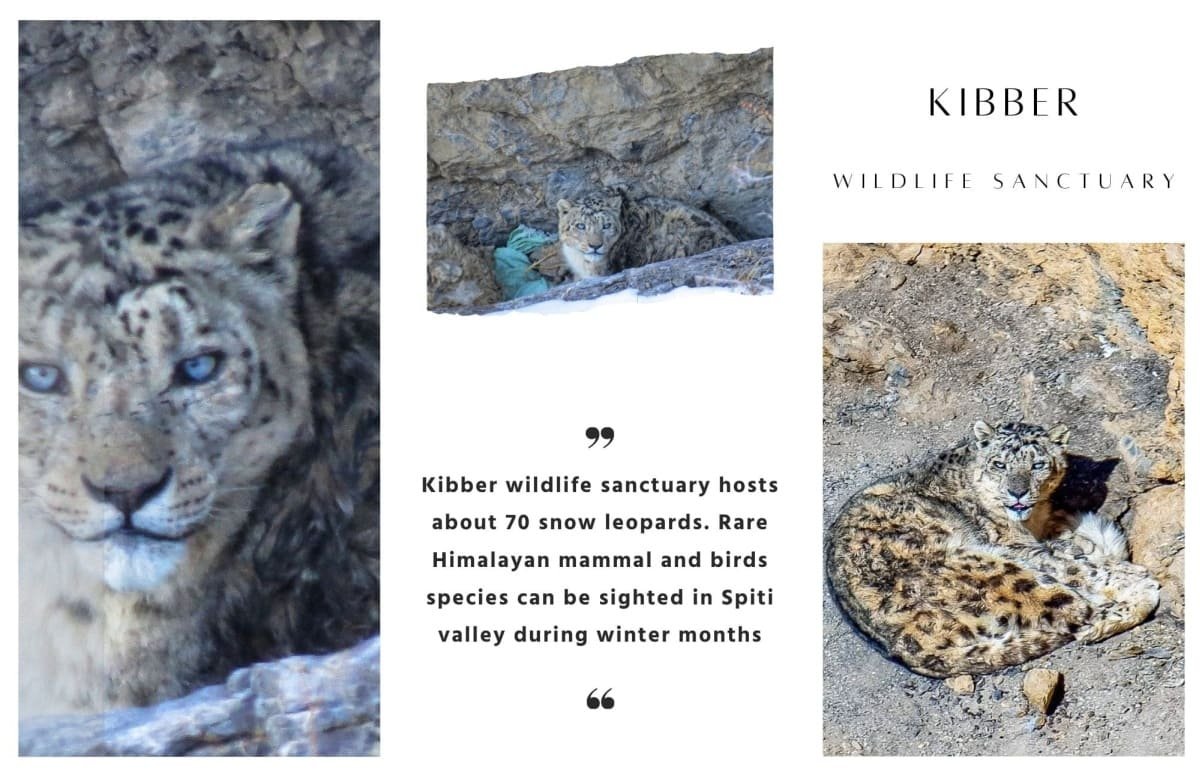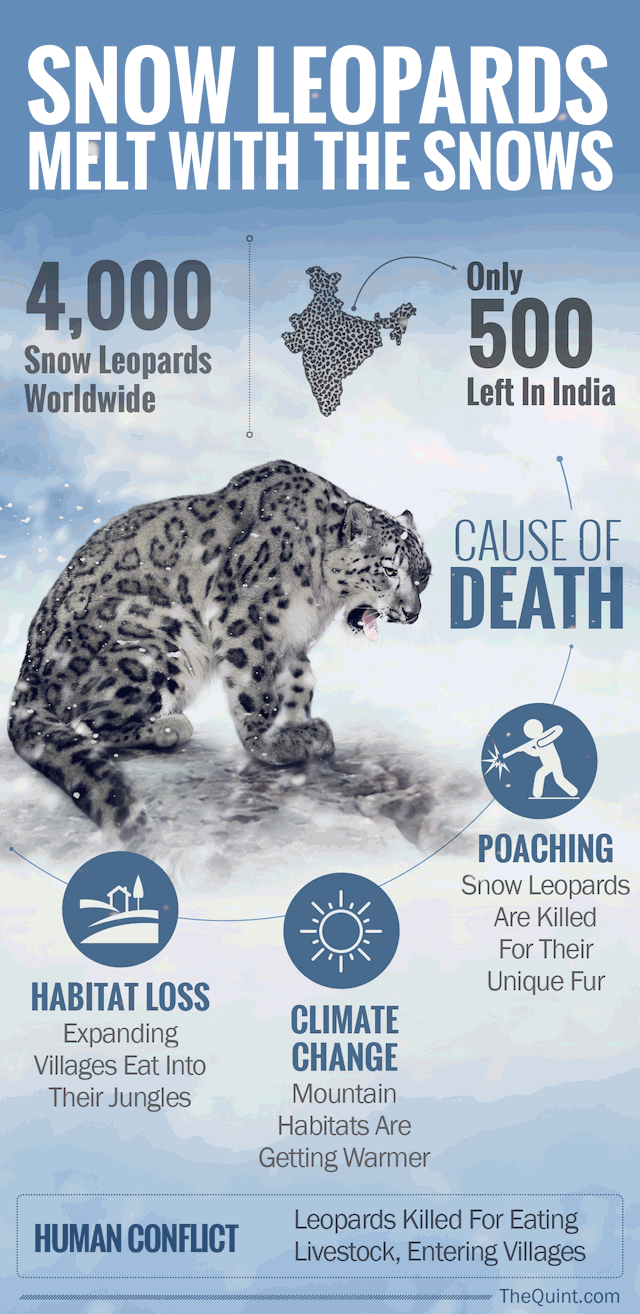Snow Leopard Photo Tour in Spiti Valley
Snow Leopard Photo Tour in Spiti Valley
- 10
- Himachal

Rundown of Spiti Valley Trip
| Best Time | December to March |
| Difficulty | Moderate |
| Max. Altitude | 4270m (Kibber village) |
| Spotting Locations | Rong Nala gorge of Kibber Wildlife Sanctuary, Plateaux surrounding Chicham village and Pin valley |
| Key wildlife species | Snow Leopards, Himalayan Ibex, Himalayan Blue Sheep, Red fox, Himalayan Snow Cock, White breasted stone / beech marten (aka Himalayan Weasel), Eurasian Lynx, Tibetan Sandgrouse, and Woolly Hare |
| Trip span | 9 Days and 8 Nights |
| Scheduled Events in 2024 | January 1,12 and February 5,15 |
| Activity | Hiking, wildlife spotting and photography |
Departures in 2024
Spiti Tour (via Chandigarh to Shimla-Kinnaur-Kaza-Manali)

Event Registration
Fields marked with an *are required
Exclusions
Places to visit en route Spiti valley

According to a survey conducted by Nature Conservation Foundation (NCF), a Bengaluru-based wildlife conservation and research organisation, in collaboration with the forest department of the government of Himachal Pradesh, there are 73 snow leopards across 26,112 sq km habitat area in the state.

The most frequent sighting has been in Kibber Plateau, slopes between Kee, Gete and Tashigang, Shilla Nalla area, plateau around Langza, Chicham, Hikkim, Komic and slopes around Demul, Salung, Rama and Lalung.
The snow leopard population mapping was done using 80 camera traps in upper Kinnaur (Asrang-Lippa wildlife sanctuary), Pin Valley, Baspa valley, Tabo, Tharot-Miyar, Bhaga, Chandra, and upper Spiti valley of Himachal Pradesh.
The International Union for Conservation of Nature is an international organization (IUCN), the apex body working in the field of nature conservation and sustainable use of natural resources, has put the Snow leopards in the vulnerable

The fragility & hardships of the winters in Spiti valley is punctuated by the limited road connectivity, driving on icy roads, no running tap water, limited warm water, subzero temperatures, and no room heating.
But the major concern is always the fragile road connectivity, which gets snapped when there is heavy snowfall and avalanches block the road for weeks.
.png)